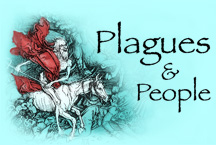| Scarlet Fever (Scarlatina) may appear at any season. Nevertheless,
it oftenest breaks out towards the end of summer, when it attacks whole
families at once, and more especially the infant part of them. The
patients feel rigors and shiverings, just as they do in other fevers.
The symptoms, however, are moderate. Afterwards, however, the whole
skin become, covered with small red maculae, thicker than those of measles,
as well as broader, redder, and less uniform. These last for two
or three days, and then disappear. The cuticle peels off; and branny
scales, remain, lying upon the surface like meal. They appear and
disappear two or three times.
2. As the disease is, in my mind, neither more nor less than a moderate
effervescence of the blood, arising from the heat of the preceding summer,
or from some other exciting cause, I leave the blood as much as possible
to its own despumation, and to the elimination of the peccant materials
through the pores of the skin. With this view, I am chary [cautious
concerning] both of bloodletting and of clysters. By such remedies,
I hold that a revulsion is created, that the particles inimical to the
blood become more intimately mixed therewith, and, finally, that the proper
movement of Nature is checked. On the other hand, I am cautious in
the use of cordials. By them, the blood may be over-agitated, and
so unfitted for the regular and equable separation in which it is engrossed.
Besides which, they may act as fuel to fever.
I hold it, then, sufficient for the patient to abstain wholly from animal
food and from fermented liquors; to keep always indoors, and not to keep
always in his bed. When the desquamation [peeling off of scaly skin]
is complete, and when the symptoms are departing, I consider it proper
to purge the patient with some mild laxative, accommodated to his age and
strength. By treatment thus simple and natural, this ailment -- we can
hardly call it more -- is dispelled without either trouble or danger:
whereas, if, on the other hand, we overtreat the patient by confining him
to his bed, or by throwing in cordials, and other superfluous and over-learned
medicines, the disease is aggravated, and the sick man dies of his doctor.
3. This, however, must be borne in mind. If there occur at the
beginning of the eruption either epileptic fits, or coma -- as they often
do occur with children or young patients -- a large blister must be placed
at the back of the neck, and a paregoric [soothing] draught of syrup of
poppies must be administered at once. This last must be repeated
every night until he recover. The ordinary drink must be warm milk
with three parts water, and animal food must be abstained from. |

